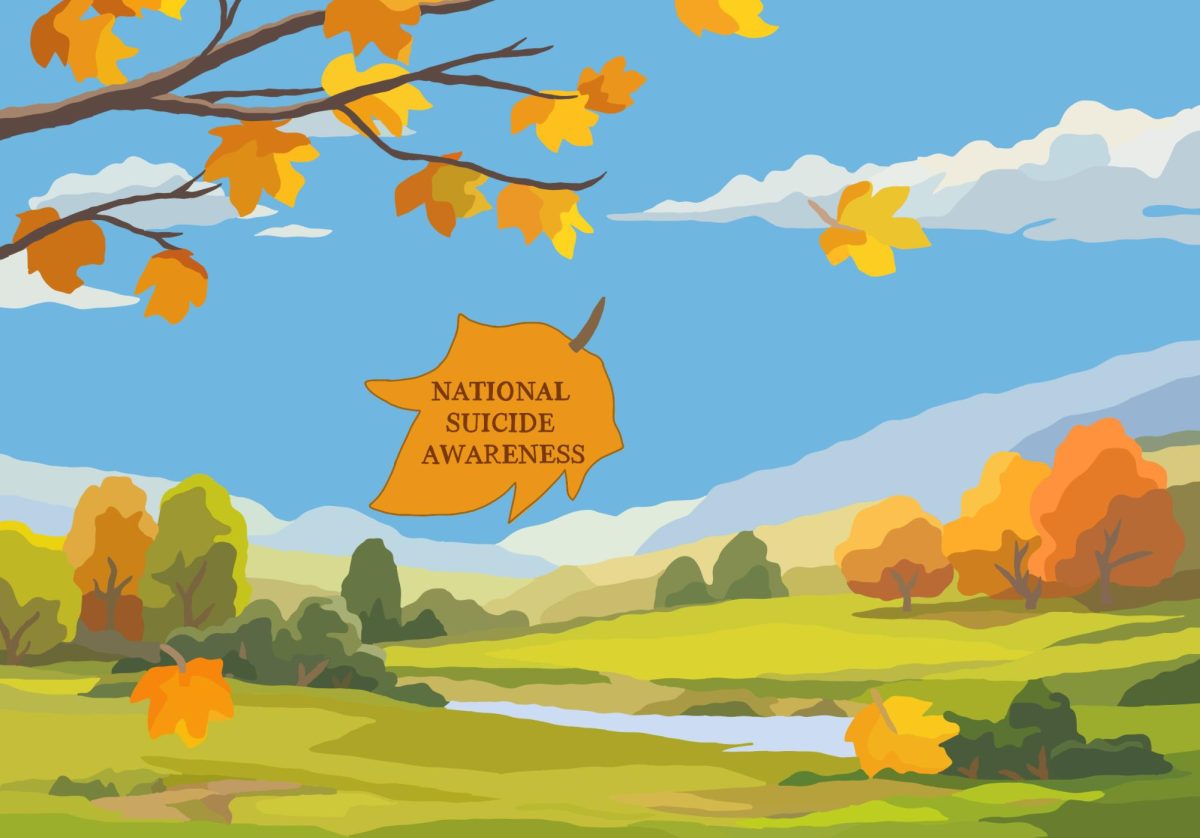Varieties of hued reds and oranges suffuse each tree once the first cool breezes hit in the early weeks of fall. Yet, with as beautiful and lively as the flourishing autumn leaves are perceived to be, a few tend to shrivel and brown earlier than the rest. As the months stretch on, the weight of their decay becomes too much to bear; severing themselves from their branches appears the only foreseeable choice. One final gust is enough to send them plummeting to the ground below. To these shriveled, brown, decaying leaves, falling seemed easier than trying to hold on to what was left of them before.
The self-proclaimed perception of life and death can easily be recognized in terms of our ever-changing seasons, particularly, autumn; the season of fallen leaves. As the bitter, cold hardships of life come sweeping in all at once, it’s easy to desecrate yourself to the point of no return. Just as our once-blooming trees of red and orange wilt away, so do we as human beings.
The first month of autumn each year marks a time of remembrance for those who have lost their battles to suicide. National Suicide Awareness month spans through September as those affected by loss speak out in memory of their own fallen leaves. In such a crucial time of cognizance, it’s fundamental to know the signs and understand suicide as it is.
Being one of the foremost causes of death in the United States and the 10th leading cause of death globally, suicide has become a word familiar to all. Not only are tens of thousands of lives claimed by suicide each and every year, but the vast majority of these once-flourishing lives had struggled alone without the proper support they deserved; which really is the insufferable reality of it all.
With as big of an issue as it is, suicide doesn’t get nearly enough recognition as it should. Most people perceive suicide as a forbidden subject; meaning it shouldn’t be discussed on a regular basis. However, with over 50 million Americans struggling with mental illnesses and an additional 12.3 million battling suicidal thoughts, further acknowledgment is necessary. As of today, suicide prevention is full of nothing more than empty promises, which is why we as a society need to take control.
The initial step in prevention is understanding suicide victims and the issues they may be facing. Making an effort to just simply listen to what someone has to say can make a world of a difference. Providing a system of support and comfort can immensely assist with the coping process.
Many of those who commit suicide do so without letting on that they had previously thought about it. The paradox of this concept is that the people who are most intent on taking their own lives recognize that they can’t express these thoughts to others, or else they won’t be able to bring themselves to truly commit. Hence, those who are most in need of help tend to be the toughest to save.
Nevertheless, being aware of suicidal indications is the most important thing a person can do when it comes to saving a life. Some warning signs can be more easily detectable than others. The simplest of behaviors such as sleeping too much or too little, withdrawal from social life, an increase in drug and alcohol use, behaving recklessly, or even displaying aggressiveness or rage can all be serious risk factors in determining whether someone may be suicidal. The more obvious signs however can be taken too lightly; some may be perceived as sarcastic remarks. Nonetheless, it’s critical to take serious consideration into specific words being used and the true intention behind them.
Some rather critical risk factors may include:
- Talking about suicide: Statements like “I’d be better off dead” or “If I see you again…,”
- Seeking the means: Trying to get access to substances or objects that could be used in a suicide attempt.
- No hope for the future: Feelings of helplessness, hopelessness, or feeling trapped
- Self-loathing: Feelings of worthlessness, guilt, shame, and self-hatred.
- Getting affairs in order: Giving away prized possessions or making arrangements for family members.
- Saying goodbye: Unusual or unexpected visits or calls to family and friends; saying goodbye to people as if they won’t be seen again.
Although it may be difficult to tell when someone is internally struggling, taking the time to recognize the behavior patterns of those around you could just salvage a life worth living. If and when you are able to recognize any signs of possible suicidal thoughts in yourself or in others, there are multiple resources available that specialize in helping those in need.
(National Suicide Prevention Hotline: (988), Crisis Text Line, Safe To Help, and more)
As the ever-increasing suicide rates persist into oncoming years, it’s vital that we help to end the suicide pandemic of our generation. Whether it’s supporting a friend or spreading awareness in other ways, suicide prevention requires more attention throughout all months of the year.
Remember to dedicate this upcoming change in season to those around you, because only in death are the autumn leaves appreciated for the color they once held. No one truly pays attention to the wilting leaves until after they have fallen.









